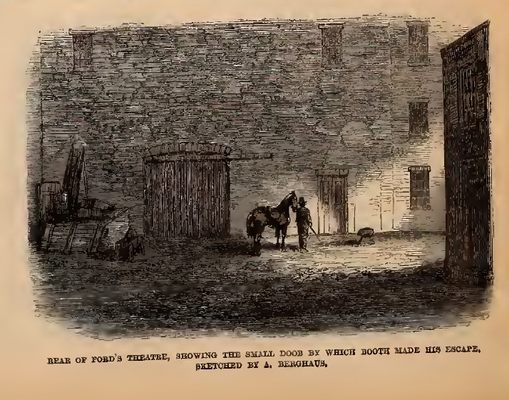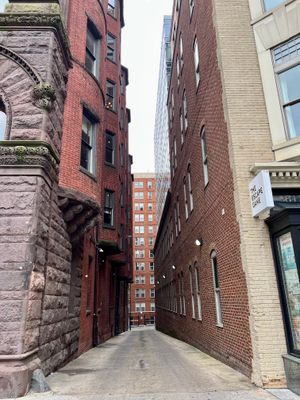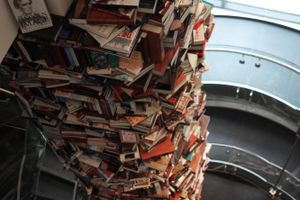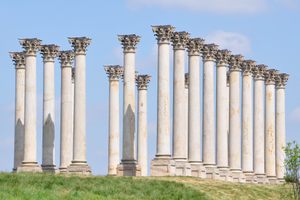About
You won't see it on any official tour of Ford's Theatre in Washington, D.C., the infamous site of President Abraham Lincoln's assassination on April 14, 1865. But a key element of assassin John Wilkes Booth's wild escape from the theater that night is easily accessible if you know where to look.
When Booth discovered Lincoln would be attending a performance of Our American Cousin at Ford's Theatre on that Good Friday evening, he knew it would be his last chance to act. Since failing at an earlier scheme to kidnap Lincoln and use him as a Confederate bargaining chip, the South had all but been defeated and the Civil War was coming to a rapid end. The Confederate capital of Richmond, Virginia, had fallen on April 3, and Southern General Robert E. Lee had surrendered to Union forces at Appomattox just five days before. For Booth, it was now or never.
With three other conspirators, Booth hatched a plot to decapitate the very head of the U.S. government. Having performed at Ford's many times before, Booth had an intimate knowledge of the layout of the building and was a familiar face to the players and stagehands. It would be easy enough to sneak up on Lincoln during the play and murder the "tyrant" whom Booth blamed for the destruction of the Southern way of life.
During Act III, Scene 2, Booth crept up to the presidential box above stage left, barricaded himself inside, and at the exact moment of an especially uproarious line in the play guaranteed to provoke a burst of earsplitting laughter—“You sockdologizing old man-trap!”—fired a fatal shot from his derringer into the president’s brain.
When Booth planned his attack, he knew he'd have no chance of escaping the theater through the front entrance. Even if the sound of the gunshot was entirely muffled by the audience's laughter, someone in Lincoln's box would sound the alarm. But Booth knew the layout of the theater well. After leaping 12 feet to the stage below, he followed a path through the wings of the theater to reach the rear exit door and the alley beyond.
In 1865, the alleyway behind Ford's Theatre was known as Baptist Alley. Before proprietor John Ford bought the building in 1862 and turned it into one of Washington's finest theaters, the brick building housed the 10th Baptist Congregation, which lent the rear alley its name. As a frequent performer at Ford's, Booth had his own small stable in the alley. On this night, he had left his bay mare near the back door and asked a stagehand to watch the horse for him. When Booth burst through the door into the alleyway, it took him only seconds to jump into the saddle and gallop away, clubbing the theater worker in the head for good measure.
Over 150 years later, despite decades of neighborhood improvement and redevelopment, Baptist Alley still exists. Booth's stable is long gone. So are the alleyway homes occupied by residents who made police statements about what they witnessed that night. Many of the 19th-century buildings that surrounded the alley have been replaced by more modern structures. Even the rear wall of the theater was rebuilt following a collapse in 1893. But as you turn down the now-nameless alley, it's not difficult to imagine that frantic long-ago scene.
In a way, with Ford's Theatre completely restored both inside and out, Baptist Alley is all that's left from that historic night. Every day, countless tourists and locals walk by the alley without so much as a glance, unaware that an original piece of U.S. history hides in plain sight.
Related Tags
Know Before You Go
The entrance to Baptist Alley is on F Street between 9th and 10th streets. The alley is open to the public with no apparent access restrictions. After entering and walking down the alley from F Street, turn right to find the back wall of Ford's Theatre. If you encounter a National Park Service employee or anyone else who wants to know what you're doing there, just explain that you're curious about the alley's historical significance. The GPS coordinates are for Ford's Theatre itself; the alley is around the corner from Ford's on F Street. There are also a few walking tours that venture down Baptist Alley.
Community Contributors
Added By
Published
September 18, 2019
Sources
- https://en.wikipedia.org/wiki/Ford's_Theatre
- https://boothiebarn.com/picture-galleries/baptist-alley/
- https://boothiebarn.com/2013/12/12/the-rear-wall-and-doors-of-fords-theatre/
- https://en.wikipedia.org/wiki/Ford's_Theatre
- https://boothiebarn.com/picture-galleries/baptist-alley/
- https://boothiebarn.com/2013/12/12/the-rear-wall-and-doors-of-fords-theatre/
- https://www.fords.org/visit/special-tours-events/history-on-foot/

































































